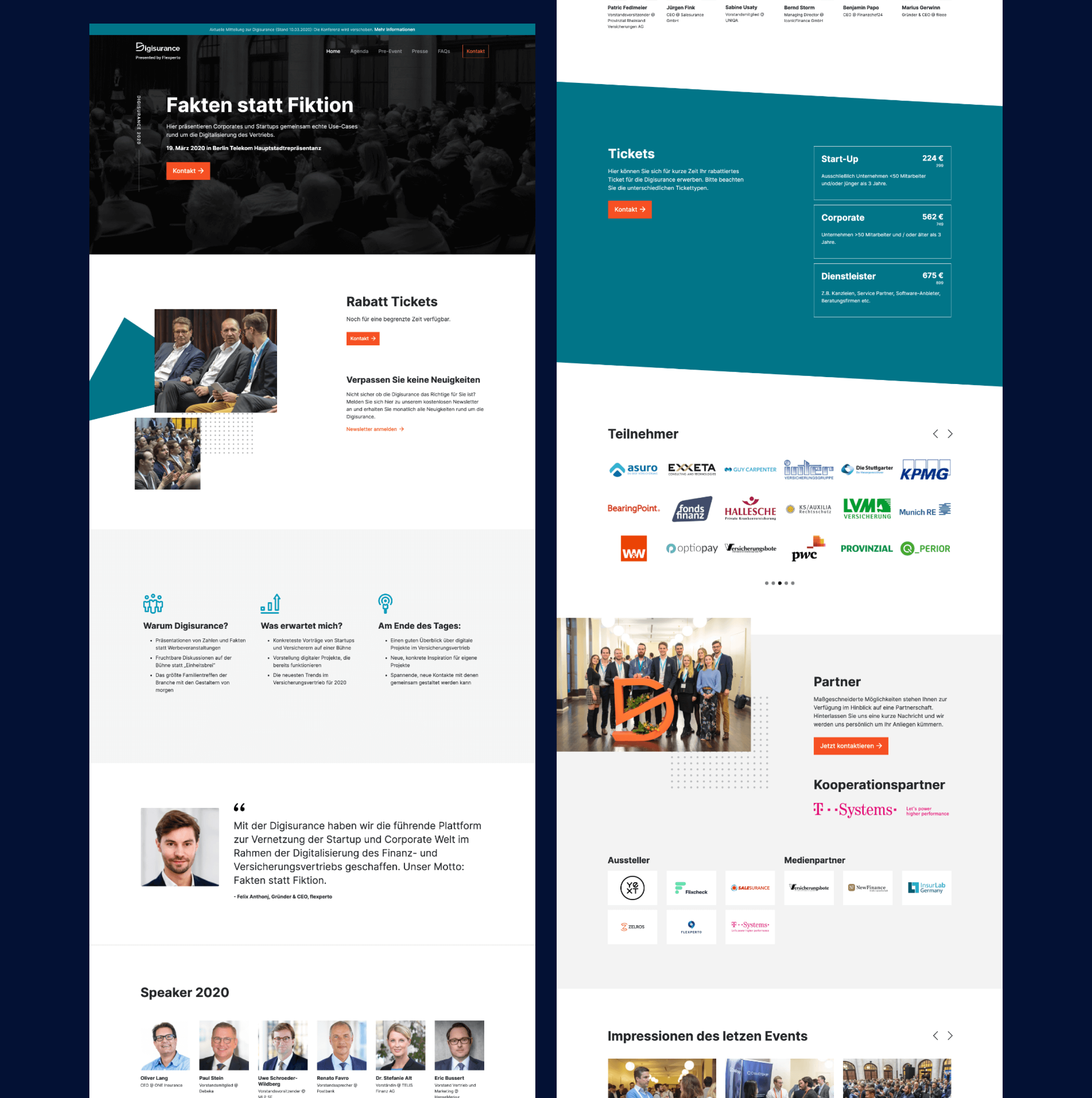Website: Annual Fintech Conference in Berlin
Contract - Web Design & Development
View the Live WebsiteDigisurance is an annual conference where innovative Fintech startups and established insurers and banks come together. Participants learn from the experience of successful collaborations between tech startups and insurance/financial companies in the DACH region, and get real insight into the challenges and opportunities in the market.

Challenge
Digisurance had a website already; however, it didn’t reflect the overall image of a modern, Fintech brand. Additionally, though it was built on WordPress with a CMS, the website was fragile and any content edits often broke other parts of the site. The marketing and PR teams were understandably frustrated when important functionality, like the ticket booking flow, would be inaccessible for days at a time.
My Role
I was contracted to update the existing design and website development to achieve the following goals:
- A website that the Digisurance event team can update and manage reliably, without causing issues or down-time
- A website design that looks like a best-in-class Fintech conference, while still appealing to our corporate banking and insurance partners
- A website that can be used on all screens and devices, where functionality is accessible and intuitive
End Result
I matched the brand that Digisurance already had in place but updated the design to be cleaner and more modern, with high contrast colors, and less design elements on the page templates.
After investigating the common website bugs and issues, I ended up completely rebuilding the site from the ground up, using the Roots framework, on custom WordPress. It’s mobile-responsive, SEO-friendly (with the help of Yoast), and also integrated with the Digisurance team’s Hubspot, so that they can market to new event sign-ups.
For editing content, the previous site was built using Visual Website Composer, a WordPress page-builder plugin, which is well-known for how difficult it is to use (plus it adds unnecessary bloat to websites). I replaced this entirely by building a set of flexible page blocks, using Advanced Custom Fields. Now, when anyone needs to create a new page, they can build from set of pre-designed block layouts, and only have to add/edit the content. This is the perfect way to allow for content-management, while also enforcing that new content matches the design/layout system of the brand.

